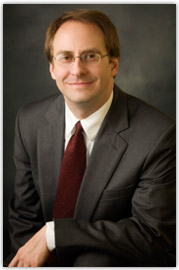The 2016 presidential campaign highlighted the role of traditional and social media in pulling American political culture further out toward the edges of the political spectrum. The political center, once understood to be the common ground on which the messy but necessary compromises of democratic politics take place, has instead become a discredited dead zone, a place where only political and moral cowards are assumed to encamp, where a resolute “courage of your convictions” is believed to be absent.
This lamentable situation has sent me back to Arthur Schlesinger Jr.’s acclaimed 1949 book, The Vital Center, in search of some perspective. Schlesinger, whom William F. Buckley Jr. once described as “the senior U.S. liberal,” is often regarded as persona non grata in libertarian and conservative circles: someone whose significant abilities as a historian were regularly overpowered by his blind partisanship.
Yet in this book Schlesinger makes crystalline observations that are fundamentally nonpartisan in nature. He argues for the importance of energy at the center of the spectrum of American politics — not the left, not the right.1
The Virtue of the Center
His analysis is cool-headed and, in fact, borders on Aristotelian in nature: he hearkens back to the Greek philosopher’s notion that virtue lies in the center of a spectrum of behavior at the extremes of which lie immoderate and destructive vices. In this way, Schlesinger makes the crucial nature of the political center abundantly clear: it is the peripheral positions in modern politics, on both right and left, that inevitably deteriorate into tyranny. In our enthusiasm for our own position, he explains, we forget that “the totalitarian left and the totalitarian right meet at last on the murky grounds of tyranny and terror.”
In the middle of the 18th century, French philosopher Montesquieu wrote about the necessity of what he described as a “balanced” government — some new alchemy that he couldn’t quite imagine but that would nevertheless combine the three classical forms of government (monarchy, aristocracy, democracy) into something new and much improved. He warned that when any of these is left to rule in their pure forms, it inevitably deteriorates into something profoundly negative, finally into tyranny.
Similarly, what Schlesinger explains in The Vital Center is that extremes of left and right on the political spectrum are as antithetical to freedom as are Montesquieu’s unadulterated forms.
The Rush to the Political Extremes
What he couldn’t have foreseen in 1949 were those forces that have made the rush to those extremes much more headlong. Social media and the current tone of the 24-hour news networks push people into self-sustaining echo chambers that simply reinforce, then magnify, assumptions and prejudices. Fewer and fewer citizens are able to credit those with whom they disagree with anything like sincerity, goodwill, or even rationality.
In part this rush to the political extremes is fueled by fear and paranoia. The specter of Soviet communism hung heavy over free societies in the early years of the Cold War when Schlesinger was writing, yet there’s no less anxiety today. “Our modern industrial economy, based on impersonality, interchangeability and speed,” he says, “has worn away the old protective securities without creating new ones.”
How much more true that is today. Both conservatism and progressivism “each in a sober mood has a great contribution to make to free society.… But neither is capable of saving free society.” That sober mood, sustainable in an atmosphere of centrism, becomes harder to maintain out on the fearful and frantic edges of the spectrum.
From the perspective of years, Schlesinger’s book turns out to be not so much a valid assertion of, as he puts it, “the relative superiority in practice of left-wing governments,” (one gets the feeling he just can’t help himself). Instead, it serves more as a foreshadowing of how the modern progressive spirit, now nourished by adopted attitudes such as political correctness and the intolerance for dissent, has in the past 30 years trended totalitarian much more than the Republicans, whom Schlesinger clearly and perhaps accurately feared were more prone to such character in the years immediately after WWII.
Schlesinger’s message is at least as important today as when he wrote the book. Far from being the place where conviction dies and morality perishes in endless sequences of compromises, the center ground is vital to the survival of democracy. He has given us a clear way of considering the balance and the dangers of its disappearance.
Pulling back the rabid extremes of both left and right must begin with a rehabilitation of the way we think of the political center — as honorable and even heroic rather than a place where principles and morals are inevitably and shamefully betrayed. If the United States is to remain a viable power on the international scene, it must be one whose center holds, particularly in the face of a wider world that often seems dedicated to nothing but eradicating heresies and enforcing consensus.
Pulling back the rabid extremes of both left and right must begin with a rehabilitation of the way we think of the political center”]
1Schlesinger is more measured in this analysis than he is in, say, his hagiographic three-volume hymn to the FDR administration, or his cloying obeisance to John Kennedy.



